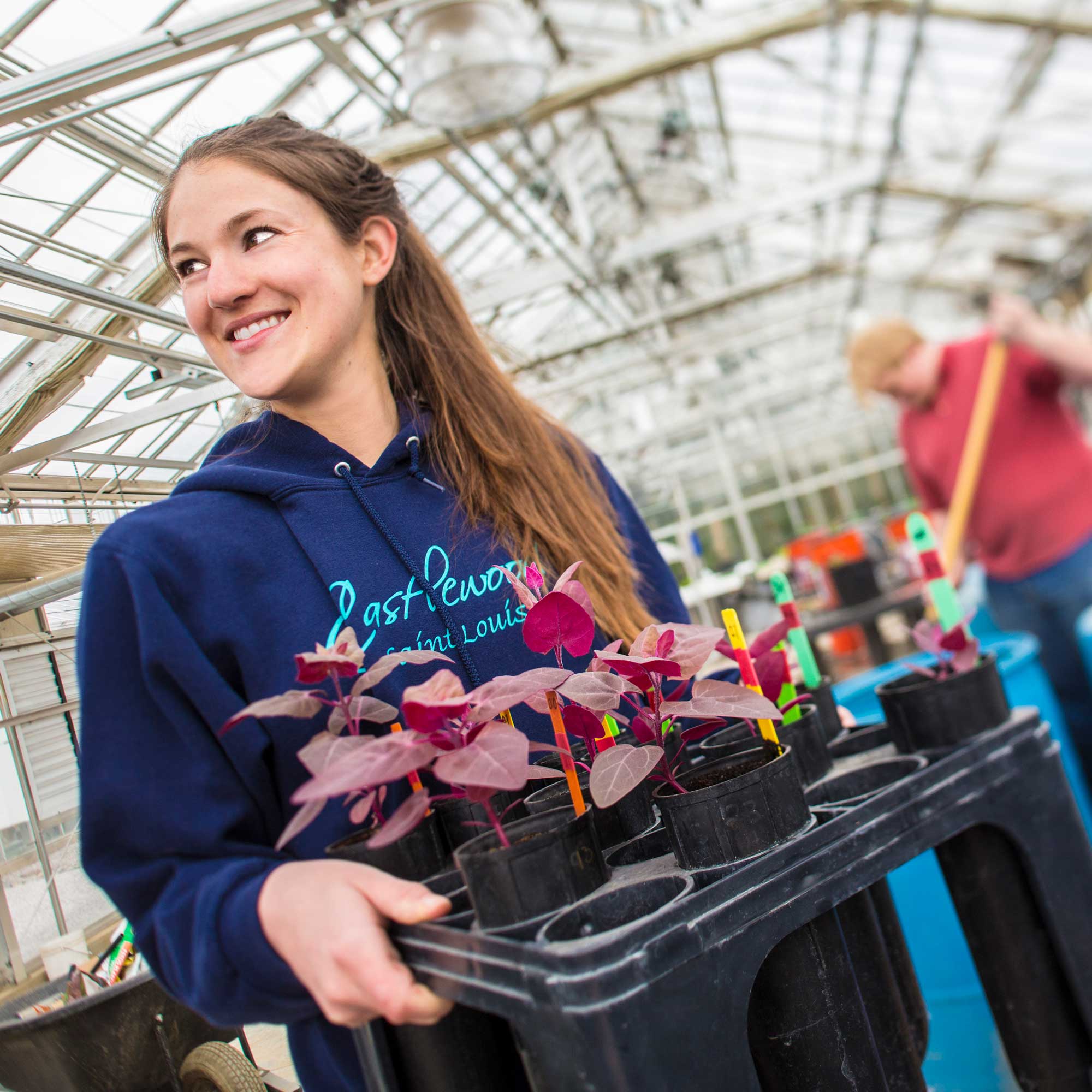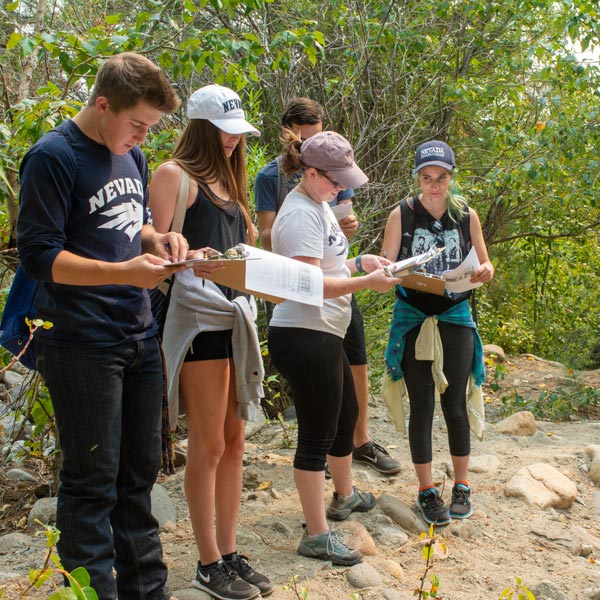In this edition
- Mercury levels in pet food cause for concern, fish-based foods main culprit
- 4-H offering summer camps to keep youth engaged and learning
- Students learn to improve and manage rangeland resources around the world
- Online Cattlemen’s Update reaches new audiences
- Assistant professor studies water cycle in ecosystems and across landscapes
About our College
A founding college of the University, we have a long tradition of excellence in teaching, research and engagement programs that benefit the health and economic vitality of Nevada. We offer programs in:
- agriculture, horticulture, rangeland & veterinary sciences
- biochemistry & molecular biology
- children, youth & families
- community & economic development
- health & nutrition
- natural resources & environmental science
Mercury levels in pet food cause for concern, fish-based foods main culprit
New study by University scientists also shows inaccurate ingredient labeling
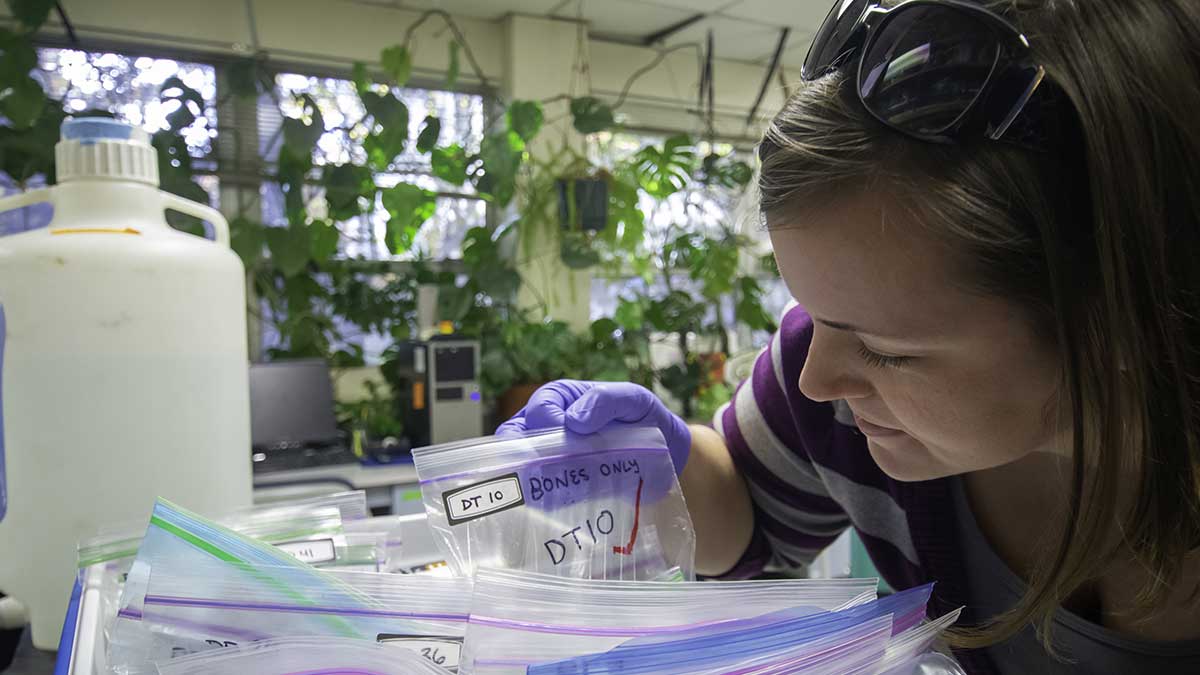 Sarrah Dunham-Cheatham, assistant research professor with the College's Experiment Station and lead author of the paper, looks through bags of samples. Photo by Robert Moore.
Sarrah Dunham-Cheatham, assistant research professor with the College's Experiment Station and lead author of the paper, looks through bags of samples. Photo by Robert Moore.
While much of the cat and dog food tested in a years-long study had concentrations of mercury that are high for chronic consumption, according to a new study published in the Elsevier journal Science of the Total Environment, the majority of the pet foods tested had mercury concentrations below suggested levels. The study also discovered a high number of inaccuracies in labeling of ingredients, indicating a need for an established and enforced limit for contaminants in pet foods based on what is safe for chronic consumption, as well as policy and regulation to ensure accurate ingredient labeling in pet foods.
Based on the package ingredient labels, tuna was listed as the first ingredient for both products, with other seafood-based ingredients, such as salmon or crab, listed as top ingredients, though no single ingredient is the main source of mercury in commercial pet foods, according to the study.
Protecting pets from fishy food ingredients
"I would encourage pet owners to avoid or minimize the feeding of fish-based foods to their pets to mitigate potential risks related to chronic mercury exposure. If a pet is a picky eater and prefers fish-based foods, try rotating it or mixing it with a nonfish-based food. If a pet has a food allergy, talk with your veterinarian to ensure the pet is not at risk of accidental exposure." -Assistant Research Professor Sarrah Dunham-Cheatham
4-H offering summer camps to keep youth engaged and learning
Extension continues tradition of offering overnight and day camps
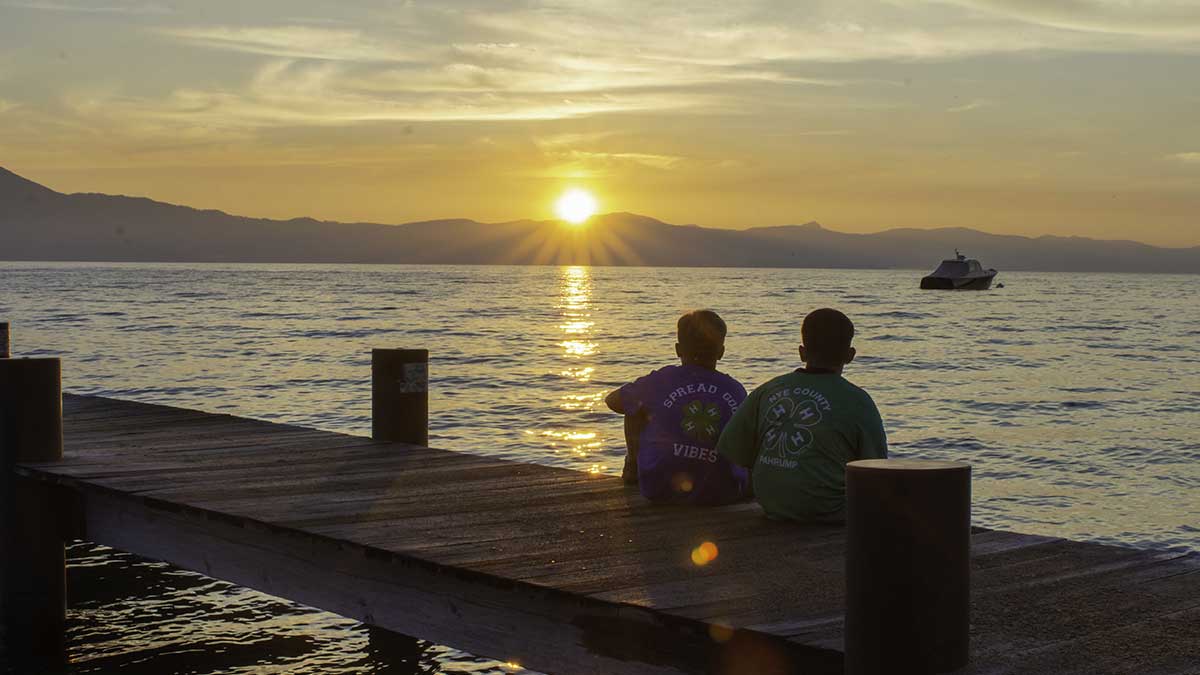 Youth at the Nevada State 4-H Camp enjoy a sunset on the shores of Lake Tahoe. Photo by Robert Moore.
Youth at the Nevada State 4-H Camp enjoy a sunset on the shores of Lake Tahoe. Photo by Robert Moore.
In addition to the many ongoing local 4-H club and youth activities that are happening across the state, the Nevada 4-H Youth Development Program will also offer some summer day camps and overnight camps for youth this year, following a Nevada tradition that goes back 80 years.
Carrie Stark, Nevada 4-H program director with Extension said that many of the camp organizers are still finalizing details, and that additional 4-H camp and summer activities may still be added. She advises parents to check with their local Extension offices for the most up-to-date 4-H camp and summer opportunities. Here are some of the 4-H day camps and overnight camps already in the works.
Day camps
- A.D. Guy Summer Day Camp, Clark County: June 14 – July 23
- 4-H Summer Adventures, Clark County: June 7 – 11, June 14 – 18 and June 28 – July 2
- Leading the Mucc Day Camp, Humboldt County: June 15 – 17 and July 20 – 22
- Trailblazers Day Camp, Humboldt County: June 22 – 25 and July 27 – 30
- 4-H Washoe County Day Camp for Youth at the Women and Children’s Center of the Sierra: June and July
Overnight camps
- Mineral County / Native American Reservations 4-H Camp: July 8 – 11
- Northern Nevada 4-H Camp: July 11 – 17
- Central Nevada 4-H Camp: July 18 – 24
- Health Rocks! 4-H Camp: July 5 – 8
Growing leadership, citizenship and life skills
4-H is a community of young people across America. Members learn life skills, make new friends, enhance self-esteem, achieve personal goals, develop positive relationships with peers and volunteers, and have fun learning and sharing as a family and a club.
Students learn to improve and manage rangeland resources around the world
Animal & Rangeland Science Graduate Program teaches animal science and the ecology, management and restoration of rangeland
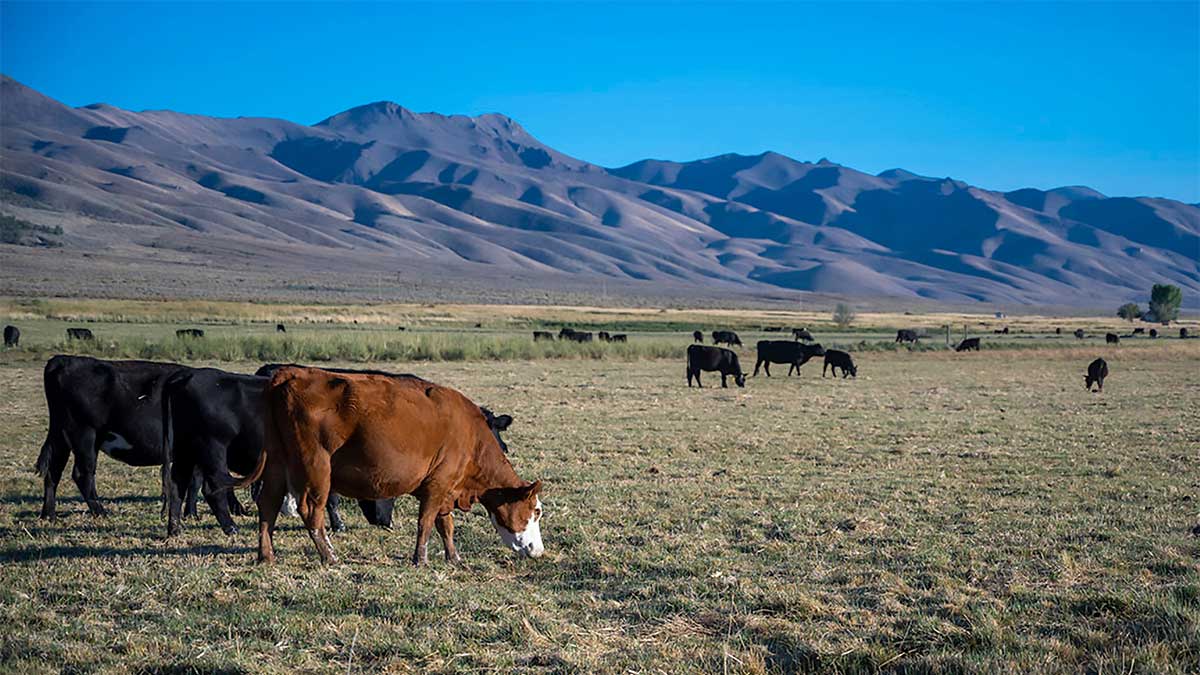 The Graduate Program in Animal & Rangeland Science offers both masters and doctoral degrees in animal science and the ecology, management and restoration of rangeland and ecosystems. Photo by Robert Moore.
The Graduate Program in Animal & Rangeland Science offers both masters and doctoral degrees in animal science and the ecology, management and restoration of rangeland and ecosystems. Photo by Robert Moore.
Rangelands, defined as areas in which lack of moisture limits crop and/or pasture production during part of the year, make up over 50% of Nevada’s land and about 41% of land around the globe. Approximately one-third of the world’s population depends on resources provided by rangelands. However, rangelands are understudied for issues such as climate change compared to other ecosystems. To prepare students to both study and manage these large land areas, our College offers a Graduate Program in Animal & Rangeland Science.
The program, taught through the Department of Agriculture, Veterinary & Rangeland Sciences, launched in 2018 and offers both master and doctorate degrees in the study of animal science and the ecology, management and restoration of rangeland ecosystems. Students in the program learn to address critical needs in animal science and rangeland ecology and management.
Students also receive hands-on training to use cutting-edge technology to better understand their disciplinary focus, such as food security screening methods, livestock nutrition crop phenotyping, artificial-intelligence-guided statistical analyses, cloud computing, and remote-sensing technologies including belowground systems and ground and airborne drone mounted systems.
Graduates of the program have found careers in many different federal and nongovernmental agencies, including the Nature Conservancy, Bureau of Land Management, U.S. Forest Service, Natural Resources Conservation Service, U.S. Geological Survey and even NASA, where they’re conducting tropical and global-level studies using remote sensing. Other graduates have become ranch managers or managers of large nature reserves.
Delivering on our University's land-grant mission
"With Nevada’s arid to semi-arid rangelands being so similar to a large part of the world, it makes sense that our land-grant university would provide training and learning opportunities to students interested in the research, ecology and management of rangelands and the animals, both wild and domestic, that use them. We provide those opportunities through this program." -Interim Department Chair Barry Perryman
Online Cattlemen’s Update reaches new audiences
Latest market, production and research information for producers available online now
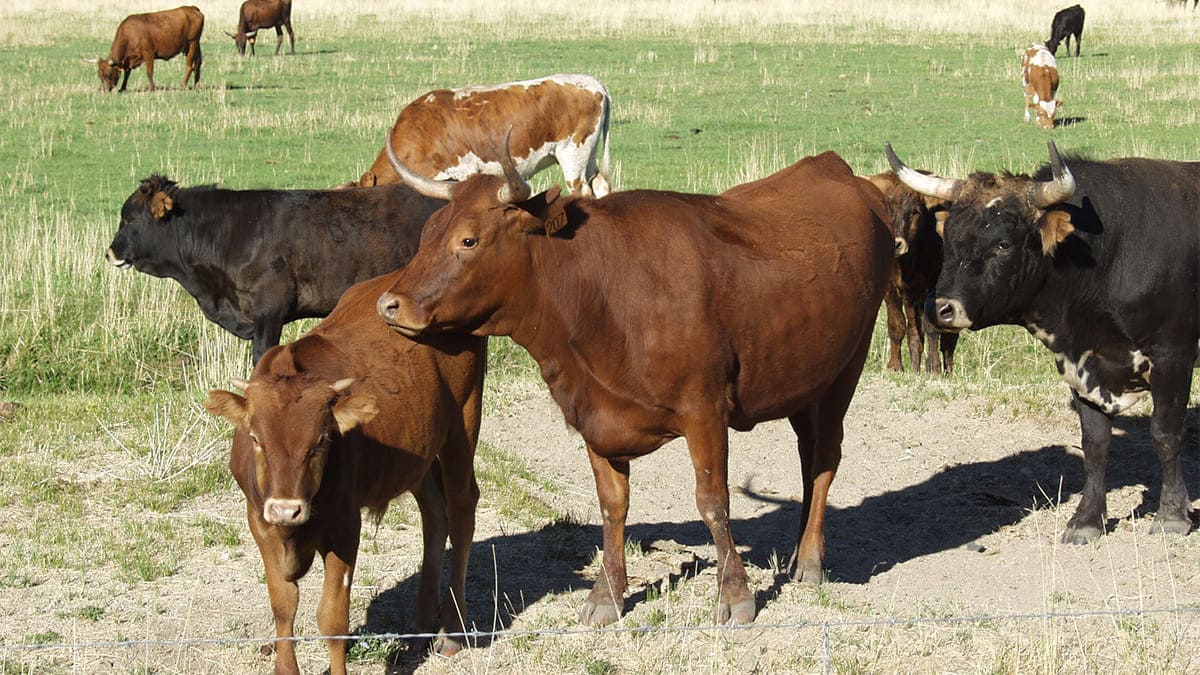 This year’s Cattlemen’s update, offered via Zoom, gathered audiences from outside of Nevada. Photo by Robert Moore.
This year’s Cattlemen’s update, offered via Zoom, gathered audiences from outside of Nevada. Photo by Robert Moore.
 Professor and Extension Educator in Mineral County Staci Emm coordinates the program.
Professor and Extension Educator in Mineral County Staci Emm coordinates the program.This year’s Cattlemen’s Update, hosted by our University, was conducted online earlier this year due to ongoing health restrictions. Participants received current research-based information about issues that may affect the efficiency, productivity, profitability and sustainability of their businesses and Nevada’s cattle industry. The sessions were also recorded and are now available online.
The event, led by our College and its Experiment Station and Extension units, offered sessions on animal health, livestock processing and slaughter, economic overview of agriculture in Nevada, and rangelands and rangeland management. Throughout the event, the sessions had audiences of 80 to 100 people via Zoom.
Since the event was held online, agriculture producers were able to join the various presentations and sessions from more locations than previous years.
Reaching producers one-on-one and via technology
"One producer even told us he was able to listen to one of the sessions while working on his tractor. We hope to reach as wide of an audience as possible in the future, and move toward a hybrid model utilizing online tools while still getting faculty and industry speakers out to meet with producers one-on-one." -Extension Educator Staci Emm
Assistant professor studies water cycle in ecosystems and across landscapes
Scott Allen joins the Department of Natural Resources & Environmental Science
 Scott Allen is studying how the water cycle impacts the ecosystem. Photo by Robert Moore.
Scott Allen is studying how the water cycle impacts the ecosystem. Photo by Robert Moore.Scott Allen has joined the College as an assistant professor who studies ecohydrology, stable-isotope hydrology and physiological ecology in the Department of Natural Resources & Environmental Science.
In the upcoming year, Allen is teaching two new courses, one of which is focused on watershed hydrology and management while the other is focused on using stable isotope ratios – atom-level chemical signatures in water, geological materials, and biological materials – to study ecological and environmental systems.
In addition to teaching these classes, he also conducts research on the processes that underlie interactions between ecosystems and the water cycle. As an ecohydrologist, Allen specializes in studying how plants in ecosystems impact the water cycle, and how water and associated physical processes structure the ecosystems themselves. Allen’s research addresses when and where plants take up water; how snowmelt and rainfall travel differently through ecosystems, hillslopes and catchments; and how ecosystem disturbances and physiological stressors affect terrestrial water and carbon balances. This research, performed as part of the College’s Experiment Station unit, helps create an understanding of how ecosystems are affected by changes to their physical environment.
Generating knowledge for Nevada
"What I research allows us to better understand the water cycle at regional and continental scales. The knowledge generated by this type of research can have especially large implications for water management in Nevada, the driest state in the US, because the fraction of precipitation used by plants is greatest in dry regions." -Assistant Professor Scott Allen
Growing a stronger Nevada
Our programs work together to make an impact
Our teaching, research and engagement programs are intertwined and complement one another. Faculty who teach on campus also conduct research as part of our Experiment Station, allowing students to learn about and participate in research. Extension faculty engaging with communities identify research needs, as well as join Experiment Station faculty to conduct research. Faculty on campus help to develop Extension programs in communities.
